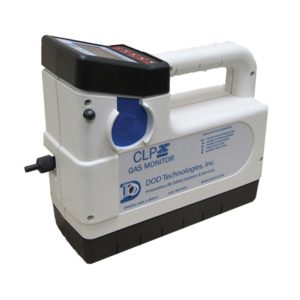During paint spraying or polyurethane foam spraying, the air will be filled with nasty gases that you really don’t want to be breathing in. Prolonged exposure to isocyanates potentially causes all sorts of respiratory health problems. Regular biological and air monitoring are simple ways of checking how much dangerous isocyanates your workers are exposed to over time.
If your job tasks expose you to paints, foams, polyurethane rubber or adhesives, you’re at risk. The headaches at first are the early warning sign. Prolonged exposure can cause anything from skin conditions to occupational asthma and severe breathing difficulties.
Whilst appliances are efficient for spraying product, the downside is that they spray mists into the air. Paints and coatings contain isocyanates and they can be very dangerous when inhaled. Even though LEV controls are in place and respirators are worn, employers have a duty of care to perform air monitoring.
Air Monitoring
Regular air monitoring and health surveillance helps employers track the levels of gases that workers have been exposed to over time and whether they’re displaying any signs of poor health. Exposure levels in the workplace should be compared against the relevant Workplace Exposure Limits (currently 0.02ppb over 8 hours). Both air monitoring and health surveillance results should be retained and used to update COSHH Assessments.
Whilst foam spraying appliances are efficient for coating product, the downside is paints and polyurethane foams contain isocyanates that cause respiratory health problems. Even though LEV controls are in place and respirators are worn, employers have a duty of care to perform air monitoring.
- Planning Ahead: The CLPX surveys the area to identify isocyanate levels allowing you to place LEV exhaust controls in the right location.
- During the Job: Throughout the working day, sprayers should wear an isocyanate badge within their breathing zone. The colour change indicator shows how much isocyanate the sprayer has been exposed to. This exposure should be recorded so those responsible for health and safety can make informed decisions over the correct use of PPE.
- After the Job: Once an insulation or coating has been applied and the sprayer has finished the job, the CLPX can be used to survey an area to ensure it is safe for others to enter. It’s practical to carry this out with a portable monitor as it can be moved around various locations.
Applications
- > Painting or spray painting
- > Manufacturing – Polyurethane foam, elastomers, paints, chemicals and adhesives
What Can I Use to Monitor Isocyanates?
Personal badges can be worn to indicate exposure level using a colour change indicator. These badges do have a place but they do not alarm or record live data.
CLPX Portable Isocyanate Monitor

The CLPX provides low level gas detection at ppb levels in a wide variety of tasks: safety spot checking, routine maintenance, and COSHH assessments.
CLPX employs reliable ChemLogic paper-tape technology to detect toxic gases. It meets the needs of health and safety professionals who need to monitor at several sample points within a plant.
Chemcassette tape technology shows the presence of gas — quickly and definitively with a physical record. So you can prevent costly downtime from false alarms.
Versatile
It is a versatile instrument that can be configured to detect a variety of gases. As a result this eliminates the need to purchase different instruments or different gas keys to sample different gases. Each calibration works with several gases and is performed before the unit is shipped to site.
Changing the instrument from detecting one gas to another requires a simple change of cassette.
All information recorded on the MicroSD is downloadable in a .CSV file so you can analyse and monitor trends if your data.
The wide gas library is capable of detecting ultra-sensitive gases inherent in your operations, including:
- > Hydrides
- > Diisocyanates
- > Mineral acids
- > Oxidizers
- > Amines
For more information about the CLPX, talk to one of our friendly advisors




